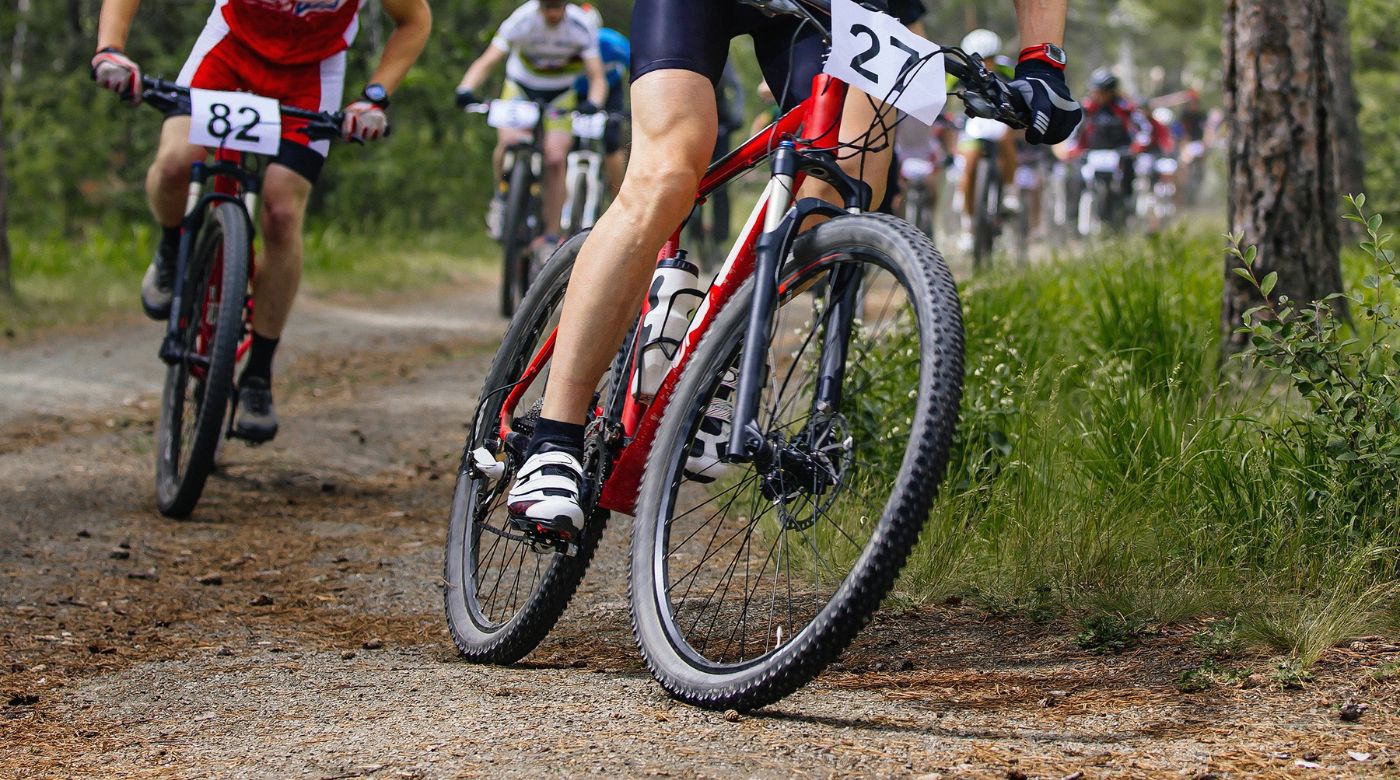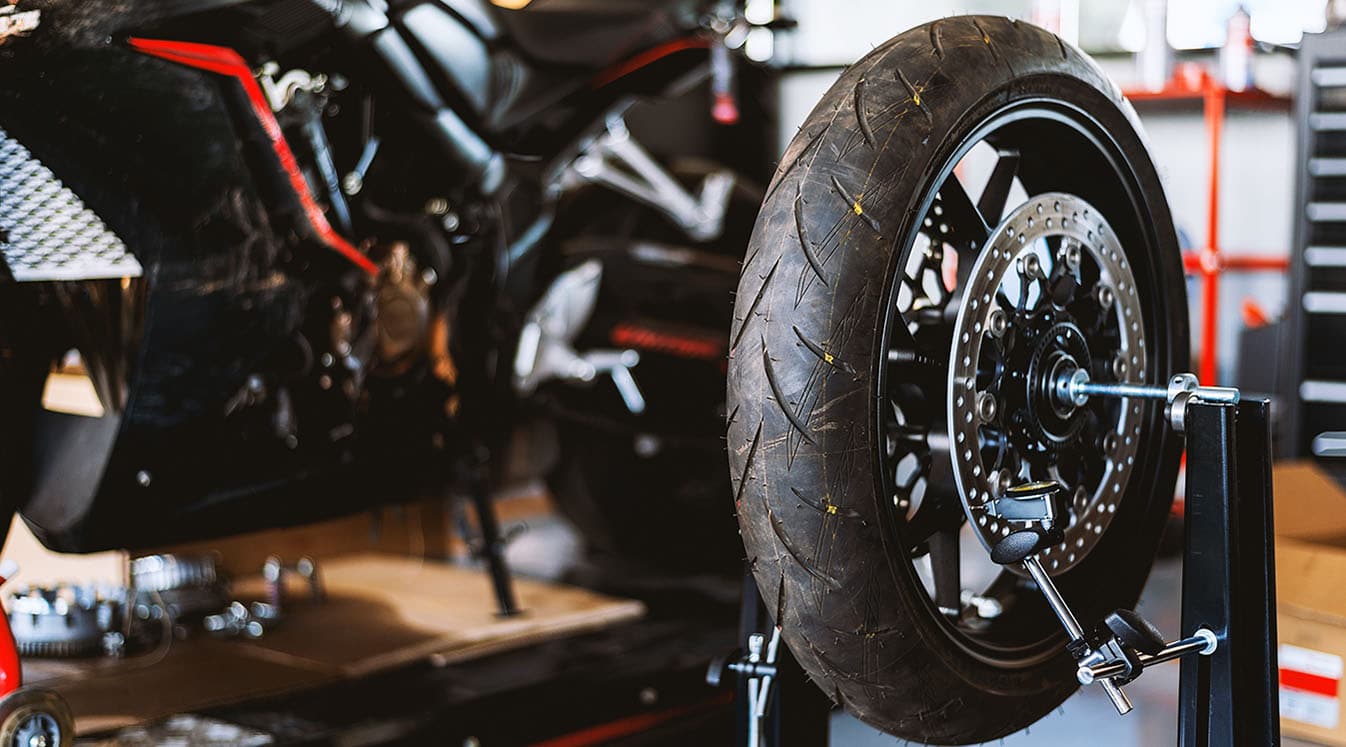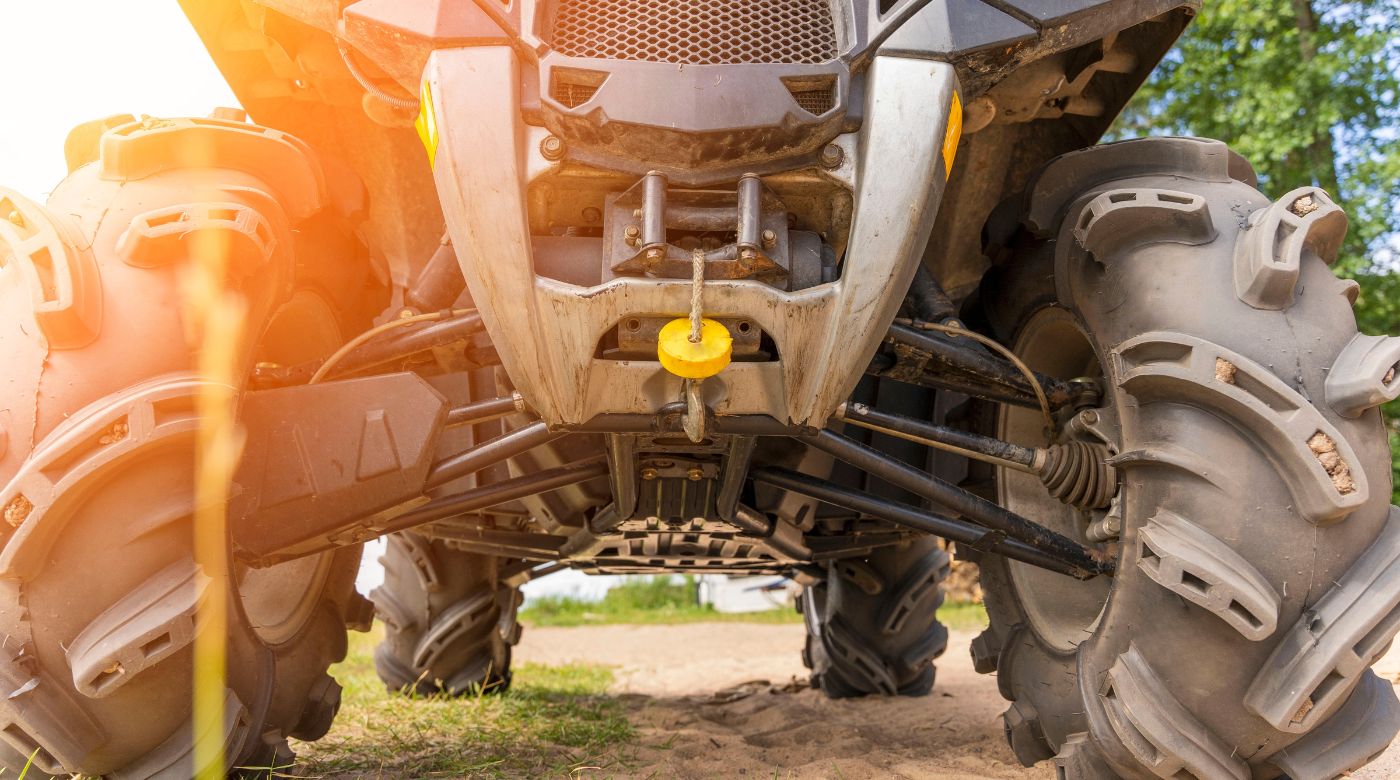Bei Bergabrennen zählt jede Sekunde. Fahrer gehen oft irrtümlicherweise davon aus, dass es schwieriger ist, einen Hügel zu erklimmen als herunterzufahren. Die Schwerkraft kann sich zu deinem Vorteil auswirken, indem sie deinen Beinen auf dem Weg nach unten eine Pause verschafft, aber deine Geschwindigkeit wird schwerer kontrollierbar, sodass weniger Zeit zum Ausweichen vor Hindernissen bleibt. Mit diesem Leitfaden für Downhill-Mountainbike-Rennen bist du in Rekordzeit unten.
Was bedeutet Downhill-Mountainbike-Rennen?
Downhill-Mountainbike-Rennen sind eine besondere Form des Sports, bei der die Fahrer beim Bergabfahren auf zeitlich begrenzten Strecken gegeneinander antreten. Die Strecke beginnt in der Regel auf einer Anhöhe und windet sich hinunter zur Ziellinie. Der Fahrer, der die Strecke am schnellsten absolviert, gewinnt, meist mit ein paar Zehntelsekunden Vorsprung.
Die meisten Fahrer erreichen auf moderaten Trails 50 bis 65 km/h, wobei Max Stöckl mit 167 km/h den Weltrekord hält.
Ausrüstung für Downhill-Mountainbike-Rennen
Mit dieser Grundausstattung bist du bestens für die Rennen gerüstet.
Downhill-Mountainbikes
Du brauchst ein Mountainbike, das die enorme Steilheit eines Downhill-Trails bewältigen kann. Herkömmliche Mountainbikes eignen sich zwar für ruppige Hügel, aber wenn du ernsthaft gewinnen willst, solltest du eher ein Downhill-Mountainbike mit geringerem Lenkkopfwinkel, verstärkten Bremsen und robuster Federung zur Verringerung von Vibrationen in Betracht ziehen.
Ein Kopfwinkel von etwa 62 Grad macht das Rad stabiler. Die Federgabeln sollten 200 mm oder länger sein, mit 40 mm Federweg. Verwende Spiralfederbeine anstelle von Luftfederbeinen, um die Dämpfung zu erhöhen. Das Rad sollte weniger Gänge haben als ein durchschnittliches Mountainbike, normalerweise sieben statt 12. Die Bremsen haben Bremsscheiben mit bis zu 220 mm Durchmesser und Vier-Kolben-Bremszangen, damit du schnell zum Stehen kommst.
Downhill-Fahrausrüstung
Benutze strapazierfähige Schutzausrüstung, um dich vor Schrammen und Stürzen zu schützen. Steile Abfahrten können dazu führen, dass du über den Lenker fliegst, was mit einer unsanften Landung enden kann.
Trage einen Integralhelm mit Visier, um deinen Kopf vor Verletzungen zu schützen, Blendung zu verhindern und Schmutz von deinen Augen fernzuhalten. Ergänze deine Ausrüstung um Knie-, Schulter- und Ellbogenschützer für zusätzlichen Schutz bei Stürzen. Mit der richtigen Ausrüstung solltest du in der Lage sein, nach einem Sturz wieder aufzustehen und weiter in die Pedale zutreten.
Zu zweit zu fahren hilft dir, die Tücken des Trails zu erkennen, aber du darfst den Blick nicht vom Weg abwenden oder die Hände vom Lenker nehmen. Nutze Bluetooth-Fahrradhelme, um drahtlos mit deinem Begleiter zu kommunizieren. So könnt ihr Tipps austauschen, euch gegenseitig vor möglichen Hindernissen warnen und den Weg des geringsten Widerstands finden, ohne euch selbst in Gefahr zu bringen.

Quelle: anatoliy_gleb/Shutterstock.com
Das Cardo Packtalk Outdoor passt nahtlos auf deinen Integralhelm, damit du immer in deinem Element bist. Nutze dieses Gerät, um das Headset mit Sprachaktivierung zu steuern. Es verbindet sich in Reichweite automatisch mit der Dynamic Mesh- und Bluetooth-Technologie, sodass du das Gerät während der Fahrt nicht berühren musst. Montiere es einfach und fahr los, um freihändig zu kommunizieren.
Vorbereitungen für dein erstes Downhill-Mountainbike-Rennen
Beginne damit, niedrigere Hügel zu bewältigen, um ein Gefühl für das Bergabfahren zu bekommen, bevor du dich an anspruchsvollere Strecken wagst. Trainiere Sprünge, um deine Abfahrtszeit zu verkürzen. Wenn du sicher landest, sparst du damit wertvolle Sekunden. Wenn du beim ersten Mal auf dem Trail auf einen großen Buckel triffst, solltest du ihn umfahren, bis du dich sicher genug fühlst, um in die Luft zu springen.
Entspanne dich und halte deine Gliedmaßen locker, um schnell auf Veränderungen im Gelände reagieren zu können. Lehne dich beim Start mit gerader Wirbelsäule zurück, damit du nicht über den Lenker fliegst. Wenn du dich nach vorne lehnst, erreichst du vielleicht eine bessere Zeit, aber man kann es auch leicht übertreiben.
Benutze deine Arme, um die Vibrationen des Untergrunds abzufangen und gleichzeitig einen festen Halt zu haben. Eine plötzliche Drehung oder eine Unebenheit könnte dich aus dem Gleichgewicht bringen. Bemühe dich also, das Fahrrad zentriert und stabil zu halten, indem du deine Hände und Oberschenkel zur Unterstützung nutzt. Spüre, wohin das Rad fahren will, und lass dich von der Schwerkraft leiten. Behalte diese zusätzlichen Tipps zum Downhill-Mountainbiken im Hinterkopf, um die Fähigkeiten aufzubauen, die du brauchst, um ein Rennen zu gewinnen.
Vermeide es, durch Matsch zu fahren, und halte dich nach heftigem Regen vom Trail fern. Die zusätzliche Feuchtigkeit kann deine Bremsen verschmieren und es schwierig machen, den Lenker zu sicher zu greifen. Überprüfe die Wegbeschaffenheit, bevor du dein Rad nach oben bringst.

Quelle: Kuznetcov_Konstantin/Shutterstock.com
Übung macht den Meister. Je öfter du die Strecke fährst, desto mehr wird sich deine Zeit verbessern. Benutze die richtige Ausrüstung, um schnell und sicher bergab zu kommen. Beginne langsam mit dem Abfahren und arbeite dich allmählich zu steileren Trails hoch, um deine Fähigkeiten auf die Probe zu stellen. Nach ein paar Monaten oder Jahren wirst du der Erste sein, der die Ziellinie überquert.
Jetzt das Cardo Packtalk Outdoor testen




